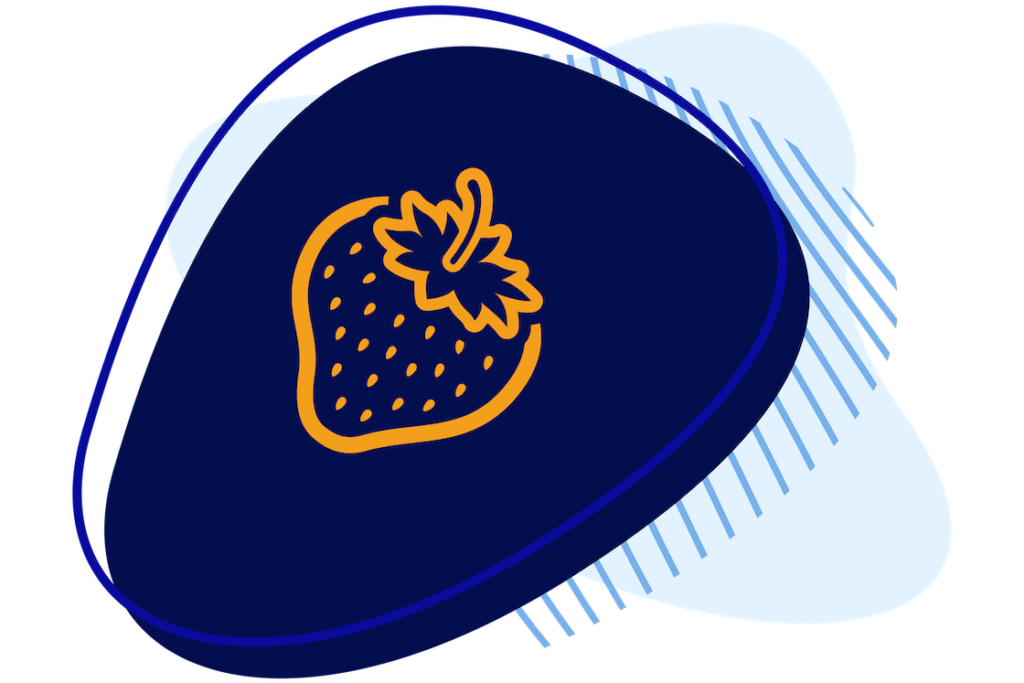In most cases, the answer is yes: You can safely eat the non-moldy strawberries in a batch where just one of them has visible mold on it.
However, if you do find a mold-covered berry, you may not want to immediately start gobbling up the other strawberries that were packaged with it.
First, there are a couple of things that you should check and consider.
The U.S. EPA recommends that soft fruits and vegetables with mold on them (“such as cucumbers, peaches, tomatoes, etc”) be discarded, as “soft fruits and vegetables with high moisture content can be contaminated below the surface.”
Examine the Other Berries Closely
As a general rule, the only strawberries you should need to throw away are the ones with visible signs of mold growth. So, if you find one in the batch that has an obvious mold presence, your next move should be to take a close look at the rest of the berries it was packaged with.
In most cases, it will be pretty easy to tell whether or not there’s a significant amount of the fungus on any of the other strawberries.
If you aren’t able to find any mold on the rest of the fruit, you should be just fine to eat it. If no visible mold spores are present, the strawberries should taste fine and be perfectly safe for consumption. However, you would be wise to eat them as soon as possible, rather than giving them extra time to potentially develop more mold.
Can Eating a Moldy Strawberry Harm You?
Although it’s unlikely, there’s always a possibility that you may accidentally eat a strawberry that contains mold. You may simply forget to look at the berry before you bite into it, or there may be a small enough amount of growth that you don’t even see it. Regardless of how it happens, though, ingesting a moldy strawberry shouldn’t cause you any real harm. In fact, other than a nasty taste, you most likely won’t experience any negative effects whatsoever. Contrary to what you may have heard or assumed, you almost certainly won’t end up vomiting or doubled over.
As it happens, the type of mold that most commonly grows on strawberries isn’t known to produce toxins, so it shouldn’t be a serious health hazard when ingested.
This is in contrast to certain foods, such as nuts, grains, and apples, which have been known to produce toxic varieties of the fungus. So, even if you’re worried that the strawberries in your package have been exposed to a moldy one, you won’t be taking any real risk by eating them.
If they taste bad, simply spit them out, but if they taste like typical strawberries, enjoy them.
Preventing Your Strawberries From Getting Moldy
Although there’s no guaranteed way to keep mold off of your strawberries, there are a couple of things you can do to decrease the likelihood that the pesky fungus shows up. The simplest option is to eat the strawberries as soon as possible after you purchase them. The quicker they’re in your belly, the less time they’ll have to sit around and develop mold.
Another effective option is to store your strawberries in the fridge until you’re ready to eat them. Mold typically needs warm temperatures to grow, so in theory, keeping your berries in a cold environment should keep them mold-free.
Storing your strawberries in an airtight container will also be helpful, and you should make sure not to wash them off until you’re ready to eat them. As you may be aware, mold requires moisture to flourish. So, if you rinse off your berries and then let them sit around for several days, you’ll greatly increase the chances of mold growth. If you follow these guidelines, you’ll give yourself the best possible odds of enjoying an entirely mold-free batch of tasty strawberries.


